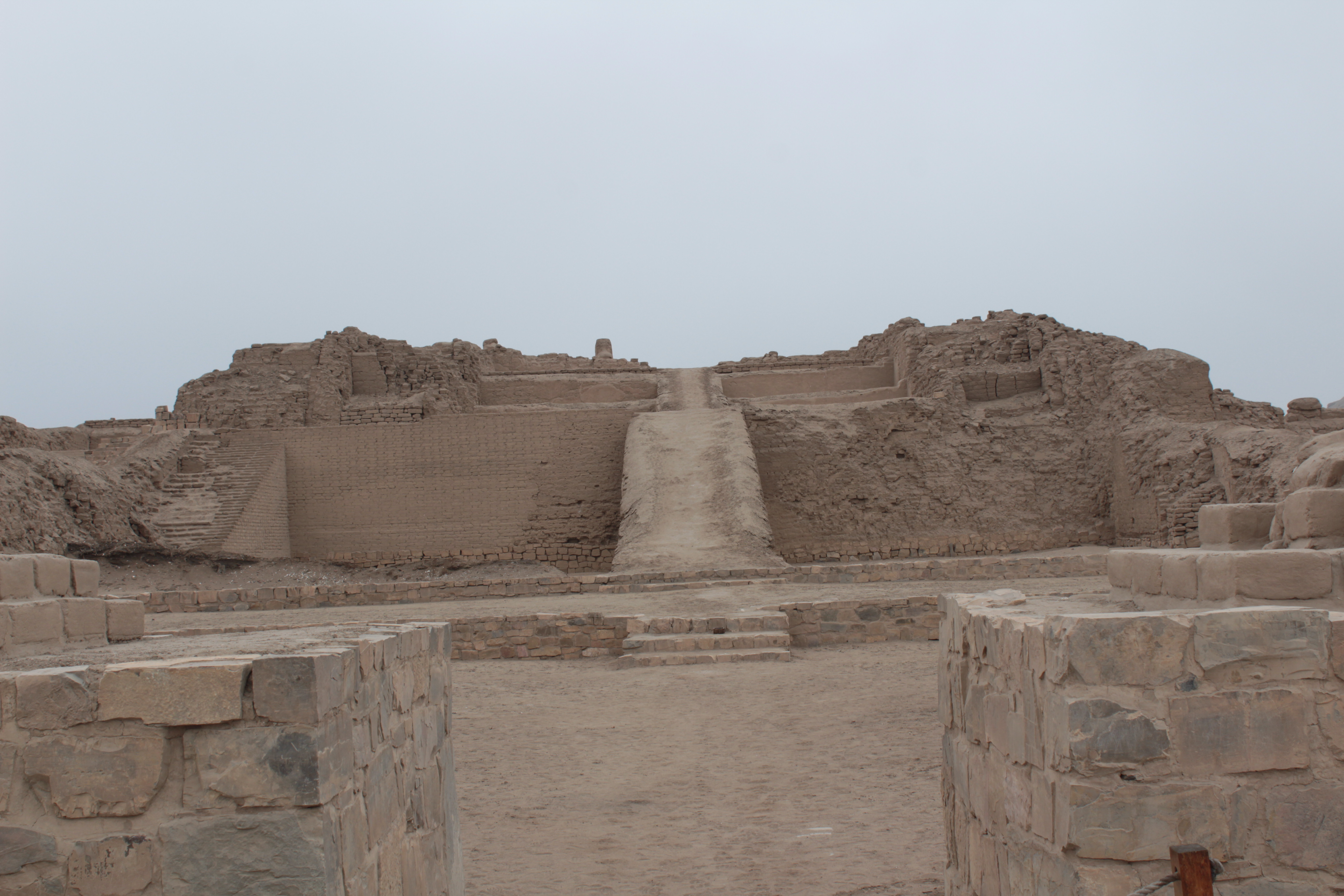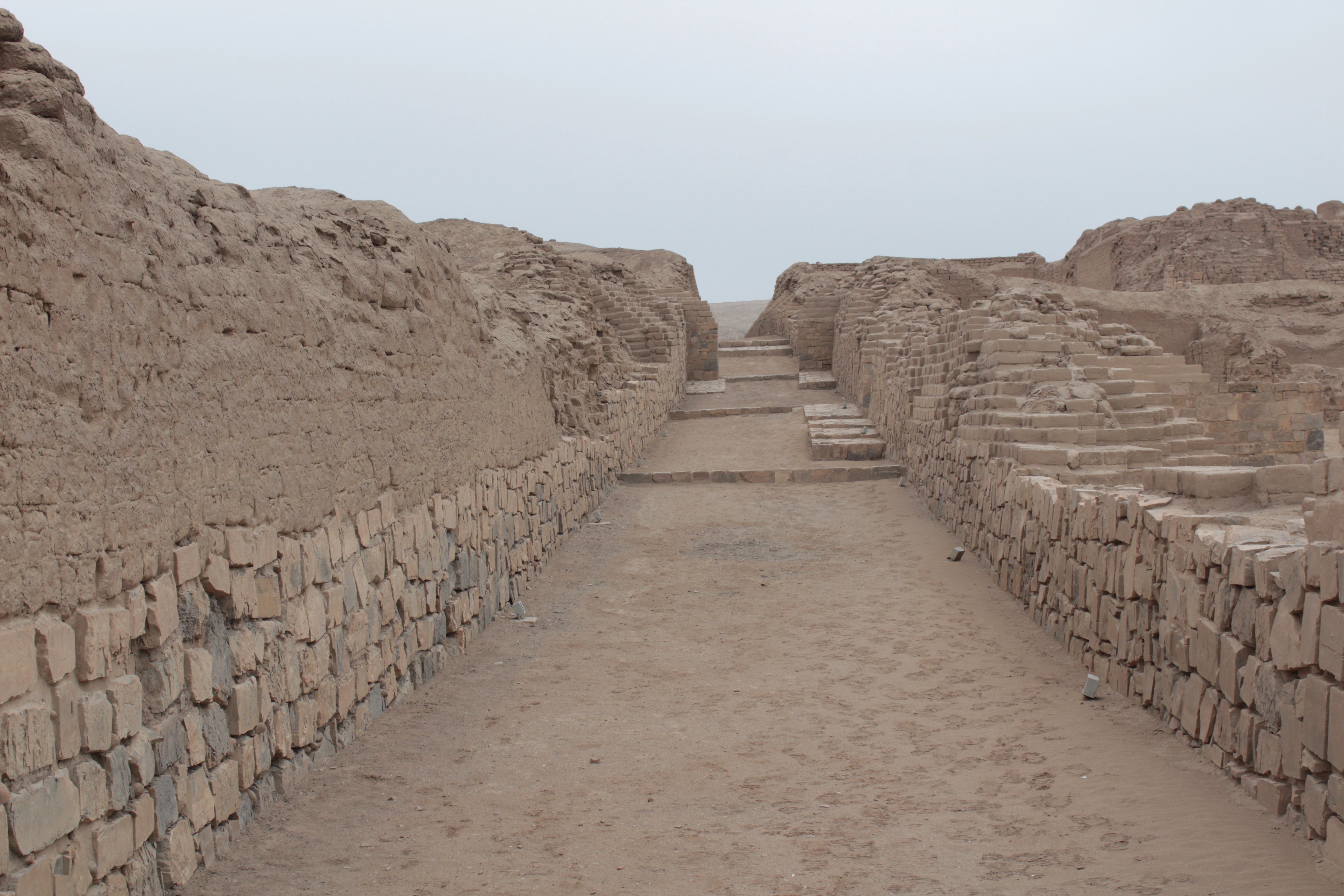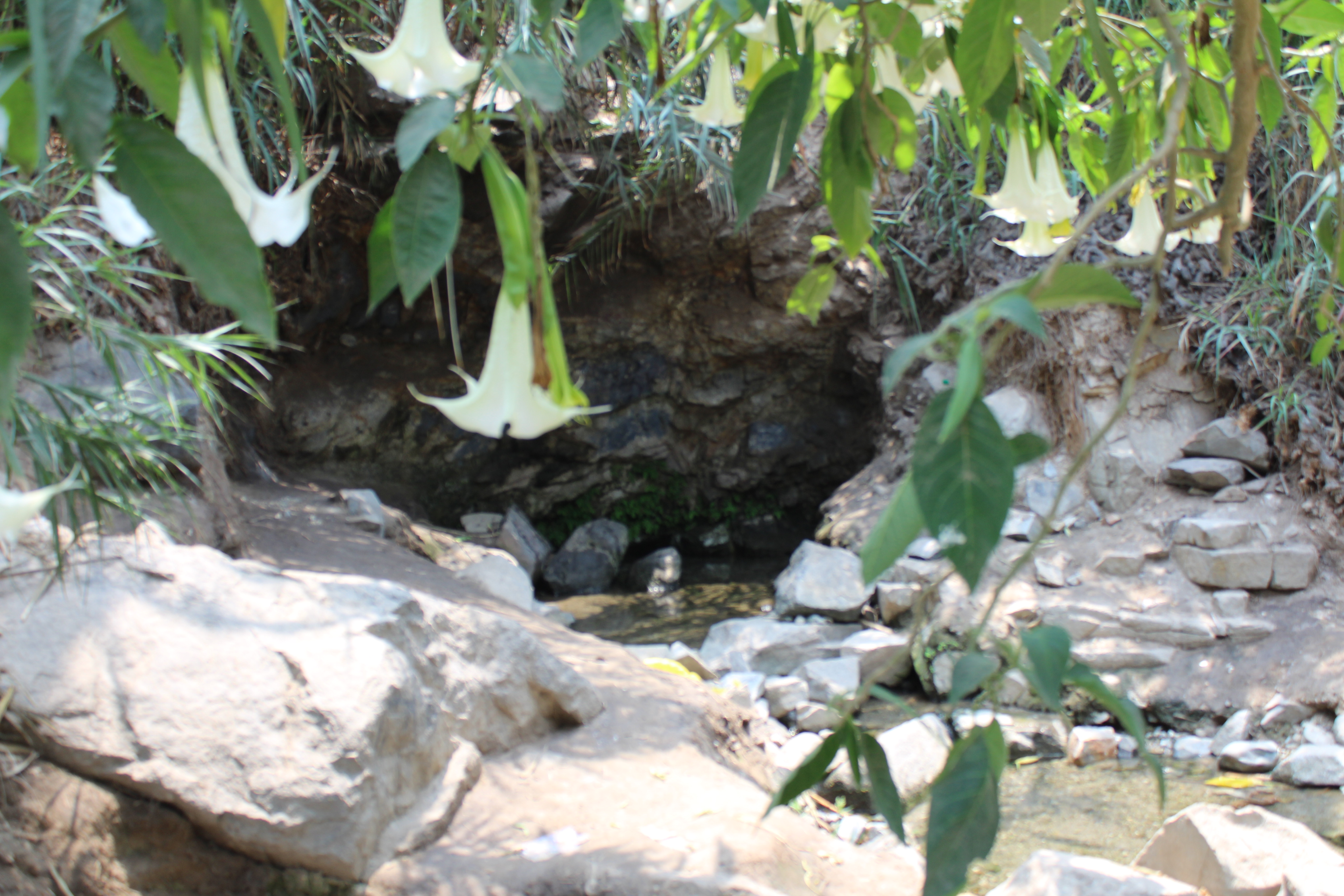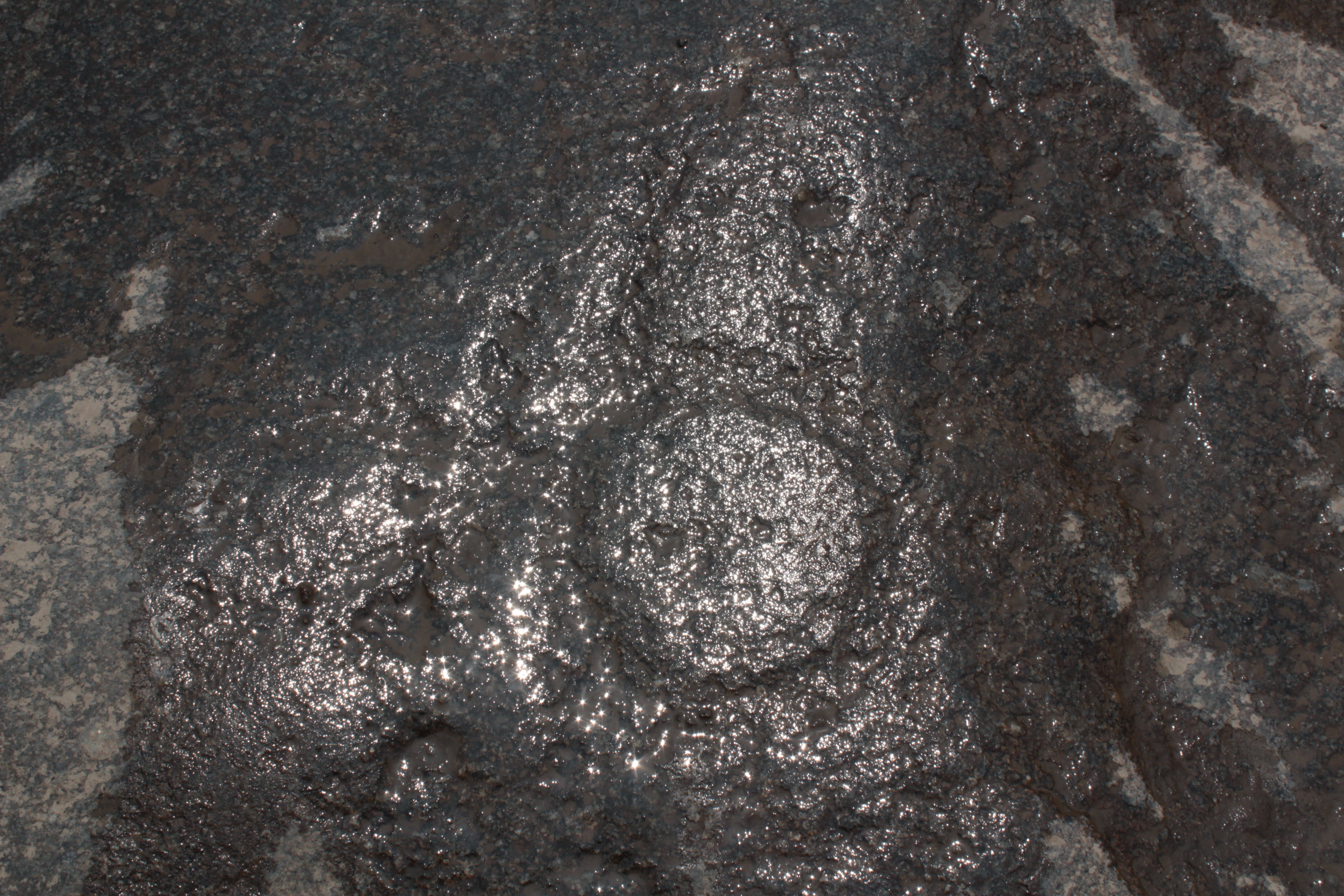If you stand on the sun temple erected by the Incas at Pachacamac on the coast a half hour south of Lima´s smart business district of Miraflores, you will see two ancient roads heading out from the maze of ramped pyramids below. One heads from the ancient complex across a dusty desert plain and through a gateway in a great adobe wall, headed directly for the ancient centre of Lima 27 km away. A straight line following the road from Pachacamac will take you past the Basilica de San Francisco, perhaps the second most important religious symbol for the Spanish invaders, and into today’s Plaza de Armas with the Presidential Palace and the Cathedral, the centre of Spanish colonial Lima.
The Spanish chose, as they did throughout their American colonies, to erect their religious buildings on top of previous sacred sites. The centre of Spanish Lima and the modern Plaza de Armas was chosen as it had a water supply brought from the river to supply the complex of temples built there. The Cathedral, and Pizarro´s house, now the Presidential Palace, were built atop ancient temples. The road from Pachacamac heads in a straight line to what was a religious centre of the Lima peoples, built nearly 1000 years ago.
Pachacamac began as a religious centre 1500 years before the present, and the Wari used it as a coastal centre, burying their dead in front of the old temple, 700 years later. Pilgrims came from the mountains to the coastal shrine at Pachacamac for a thousand years or more before the Incas, who added their own sun temple to the site.

The road towards central Lima (top), a ramped pyramid from the Ichsma period (middle) and the Inca addition to the site (bottom) shortly before the Spanish invasion.


The second road heads inland, eastwards, and if followed in a straight line it would reach Jauja, an important regional centre today and before the Incas, one of the cities of the Huanca people, who were conquered by the Inca only a generation or so before the coming of the Spanish. But the road up the Andes does not go in a straight line. It follows the valley of the river Lurin before climbing past Paria Caca, the sacred peaks, and continuing to Cusco. Pachacamac was such a powerful shrine for the coastal people that the Inca chose to incorporate it into their pantheon. The eastward road built by the Incas was designed to join the spiritual centres of the coast and the highlands, by way of Paria Caca. Thereafter the Incas sent annual tribute of sacrificial llamas to the coastal shrine, just as they made their sacrifices in Cusco.
The modern road cuts inland past the pond where all the fishes in the sea originated, past the red terraced walls of the hilltop oracle where Pacha Camac, earth maker and earth shaker, foretold the future, the ramped pyramids of the Ychsma, the pavilions for the pilgrims, the painted murals of the earlier shrines, and heads through a crowded narrow passage where houses of borrowed wood and plastic sheets cling perilously to the hillside above the road and chicharrón – roast pork – vendors shout at passing cars, crosses a trickle of a river between high gravel banks, and opens out into the lower end of the Lurin valley, flat and fertile. By the roadside sheep, alpaca and llamas chew grass in front of the car park for a “country restaurant”. The roads heads up the valley to the modern town of Pachacamac, three blocks by four with a Plaza de Armas offset from the road up the valley, surrounded by farmland.
I take a bicycle out of town and in five minutes reach Mina Perdida, a mound of broken black stone and dirt that tumbles down to the roadside. In fact the road cuts through the centre of this 4000 year old ritual centre, a “U-shaped mound”, the defining style of a culture which populated this and neighbouring valleys, long before the Pachamac site in its present form became a religious centre. The map in the coffee shop showed the U very clearly, two arms pointing roughly upriver, a higher central structure at one end, and an open central space. The map was dated 1955. The new road cutting through was built in … and much of the western arm was demolished to create a flat space for new housing in….. The field is still there, without house plots, and for sale.
You can climb up what remains of the U to a Catholic crucifix at the top. The U mound was a massive undertaking, big enough to enclose several football pitches in the central space.
The remains of housing around the site suggest a population of less than three thousand, yet archaeologists estimated that the building of the mound would have required 100 people working for two months a year, for four hundred years. The U is four hundred metres across the base and the arms are each 400 metres long. The ceremonial centre seems to have been used for five hundred years, from three and a half to three thousand years before the present.

Looking across the main mound of the U at Cardal, towards Pan de Azucar (top). A staircase rises up to the atrium in the centre of the main mound, facing the plaza (below).
There is another similar construction, Cardal, a few kilometres further up the left bank, better preserved, with an irrigation canal running by it. The foot of the U, actually the head of the mound, was seventeen metres high, 145 metres wide and sixty metres deep. Of the two wings of the U, the best preserved is 300 metres long and 90 metres wide, and slightly lower than the central platform at twelve metres high.

Looking out across the valley, flat fertile fields watered all year round by the channels from the river, you can see a third U temple on the opposite side of the river at Manchay Bajo. In all there are, or were, at least seven such U shaped mounds in the valley, plus others in the neighbouring Rimac and Chillon valleys. Huaca la Florida, in the Rimac valley, was one of the earliest, with initial construction dated to before 4000 years BP, and also one of the largest. The central platform was 350 metres wide and its wings or arms 400 metres long, creating a space which could accommodate 100,000 people.
Today you see dull grey mounds surrounded by farmland. But the U temples in the central coast had walls coated with clay and brightly painted in red and yellow. The front of the Cardal atrium had a multicoloured frieze showing an open mouth with sharp teeth, which was excavated and sketched and then covered over to protect it. Similar polychrome friezes, one showing a blue face, with red lips and white teeth, and a stream of blue mucous streaming from the left nostril, were uncovered at Garagay in the Lima valley in 1974. Those have now been destroyed. But further excavations there in 2017 uncovered a long painted freeze flanked at one end by a fanged head, and at the other by a mythical creature resembling a crocodile.
Cardal stands to the right of the modern road, at the upper margin of the irrigated zone. Between it and the river a great round hill rises, the Pan de Azúcar, Sugar Loaf. It features on postcards with an unusual rock structure high up on one flank, in the form of two lovers embracing. The Lovers’ Rock. Low down on one side is the Manantial, the spring, of eternal youth.

Water bubbles up at the foot of the Sugar Loaf hill at the The Manantial, the Spring of Eternal Youth, with trees of a Datura species, a powerful deliriant, growing in front of the pool.
Wheeling the bike down past a farmhouse and a sleeping dog I follow the white arrows painted on rocks to a narrow muddy track between overhanging canes only to turn the corner and find a young couple who do not want to be disturbed. I make my excuses and retreat, skirting the canes to descend on tidy stone steps to a still pool over sand beneath a rock outcrop.
A small stream burbles away downhill. The rock face is covered in small delicate names and dates of couples written in white marker, discreet and respectful, whilst higher up in spray paint is a U in a circle, the emblem of one of Lima’s leading football teams.
As I walk back, another couple head into the thicket. The pass to the top of the hillside winds up through scattered rocks, but I stop when I reach a smooth narrow ledge, looking almost man made, crossing the top of a cliff which falls ten metres down to the rocks around the spring below.
Back by the farmhouse there is a cube of black rock with a flat upper surface in the centre of which is a polished round depression. It could have been a grinding stone for the farmhouse, but as the sun set behind the sugar loaf, I can make out faint inscribed designs. One or two circles, possibly a snake, maybe even a feline, suggest the stone and its grinding space are a good deal older. On the hillside nearby in what seems to be a fresh fall of earth from higher are rough ceramics and a few bits of mollusk shell.
I see a tinge of pink in the dirt and bend down to pick up an unmistakeable fragment of spiny oyster or Spondylus, the food of the gods, grown only in warm tropical waters far to the north. As I put the spondylus in my pocket and cycle away, another young couple are walking down to the Spring of Eternal Youth.

On the path above the Sping of Eternal Youth is a flat square rock with a ground and polished depression in the centre (top). A few faints marks on the rock can be seen, which can be highlighted by observing in reflected sunlight with a wet surface (centre) to visualise the patterns over the surface of the rock (bottom).




…Go back to 43 – From the Zoo to Miraflores …
Go back to 44 Pilgrimage to Pachacamac – unfinished…
Go forward to 50 – Fading images as the rock varnish thickens
